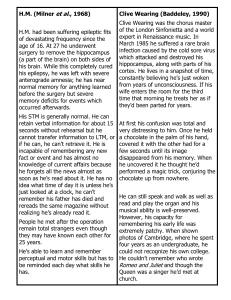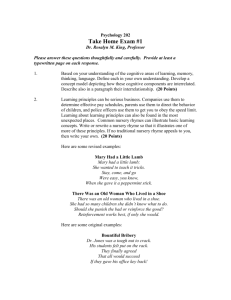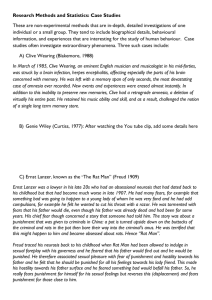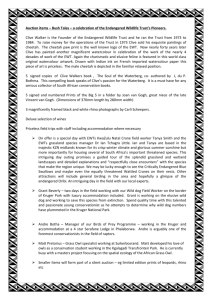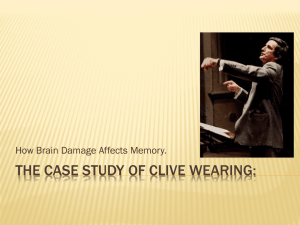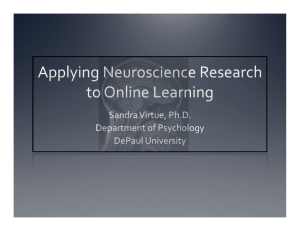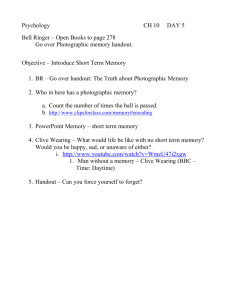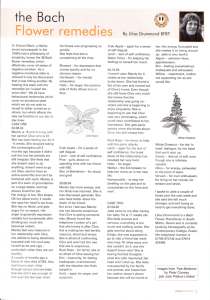case-study-of-amnesia-clive
advertisement
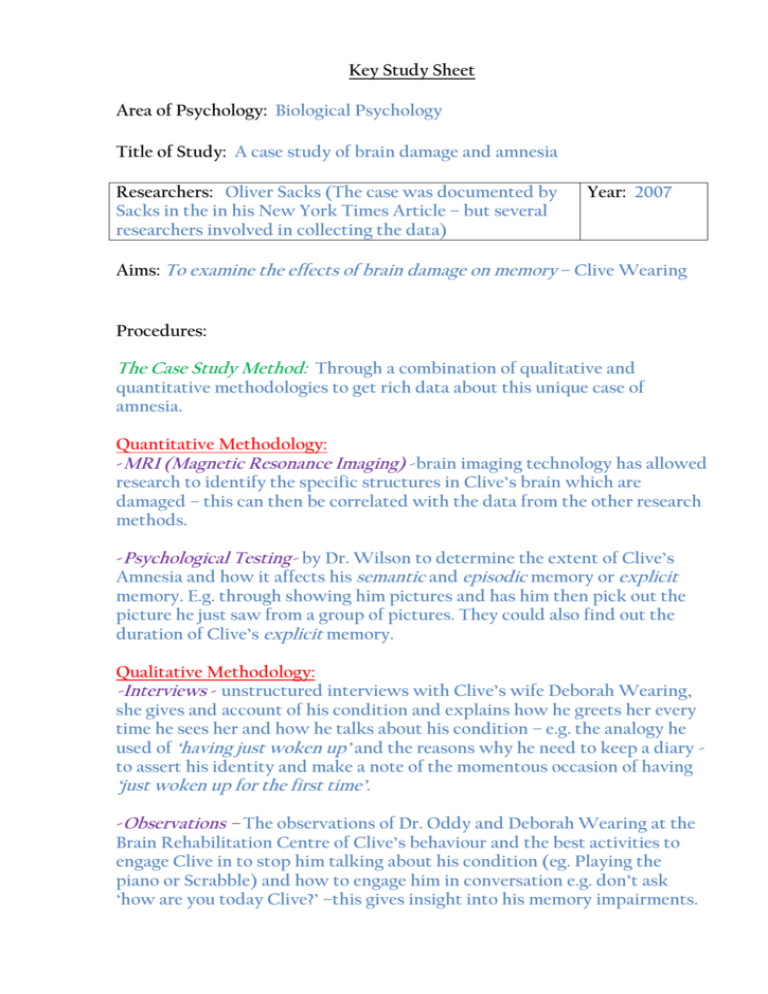
Key Study Sheet Area of Psychology: Biological Psychology Title of Study: A case study of brain damage and amnesia Researchers: Oliver Sacks (The case was documented by Sacks in the in his New York Times Article – but several researchers involved in collecting the data) Year: 2007 Aims: To examine the effects of brain damage on memory – Clive Wearing Procedures: The Case Study Method: Through a combination of qualitative and quantitative methodologies to get rich data about this unique case of amnesia. Quantitative Methodology: -MRI (Magnetic Resonance Imaging) -brain imaging technology has allowed research to identify the specific structures in Clive’s brain which are damaged – this can then be correlated with the data from the other research methods. -Psychological Testing- by Dr. Wilson to determine the extent of Clive’s Amnesia and how it affects his semantic and episodic memory or explicit memory. E.g. through showing him pictures and has him then pick out the picture he just saw from a group of pictures. They could also find out the duration of Clive’s explicit memory. Qualitative Methodology: -Interviews - unstructured interviews with Clive’s wife Deborah Wearing, she gives and account of his condition and explains how he greets her every time he sees her and how he talks about his condition – e.g. the analogy he used of ‘having just woken up’ and the reasons why he need to keep a diary to assert his identity and make a note of the momentous occasion of having ‘just woken up for the first time’. -Observations – The observations of Dr. Oddy and Deborah Wearing at the Brain Rehabilitation Centre of Clive’s behaviour and the best activities to engage Clive in to stop him talking about his condition (eg. Playing the piano or Scrabble) and how to engage him in conversation e.g. don’t ask ‘how are you today Clive?’ –this gives insight into his memory impairments. Findings & Conclusions: Quantitative Methodology: -MRI (Magnetic Resonance Imaging) -scans have shown damage to frontal and temporal regions, but particularly to the Hippocampus a brain structure in the Limbic System where the functions of memory and learning are localized. This was caused by the Herpes Simplex virus in 1985. MRI helps us to understand that the transfer of information from STM to LTM is connected to the Hippocampus (v. important in explicit memory). -Psychological Testing -by Dr. Wilson has determined that Clive has one of the most severe cases of amnesia ever seen, he has both anterograde (he cannot lay down new long term memories after the trauma) and retrograde amnesia (losses in his general knowledge and his understanding of when things have happened have also occurred – semantic & episodic memory). This can is then interpreted in light of the MRI data showing damage to his Hippocampus. Qualitative Methodology: -Interviews & Observations– Give us insight into how as a memory as a whole is a distributed system and not all localized to the hippocampus – Clive is able to play the piano, which suggests that the areas of the brain related to procedural memory (the Cerebellum) is intact. Also Clive has a strong emotional response every time he sees his wife suggesting that emotional memory (related to the Amygdala) is also not impaired. Procedural and emotional memory is known as implicit memory. Conclusion – This case study clearly demonstrates the localization of the function of memory – explicit memory (semantic & episodic) & the consolidation of new long term memories related to the Hippocampus. Implicit procedural memories – such as playing music (related to the Cerebellum) and emotional memory of his wife (Amygdala) are not affected by the damage.
